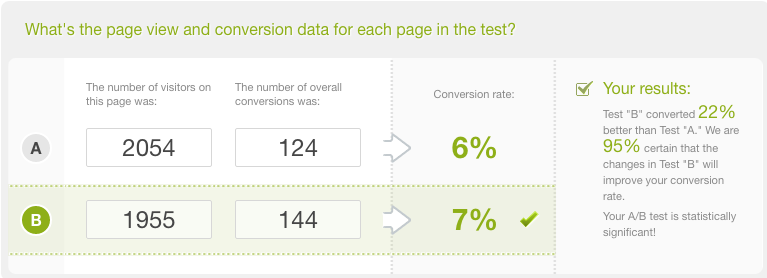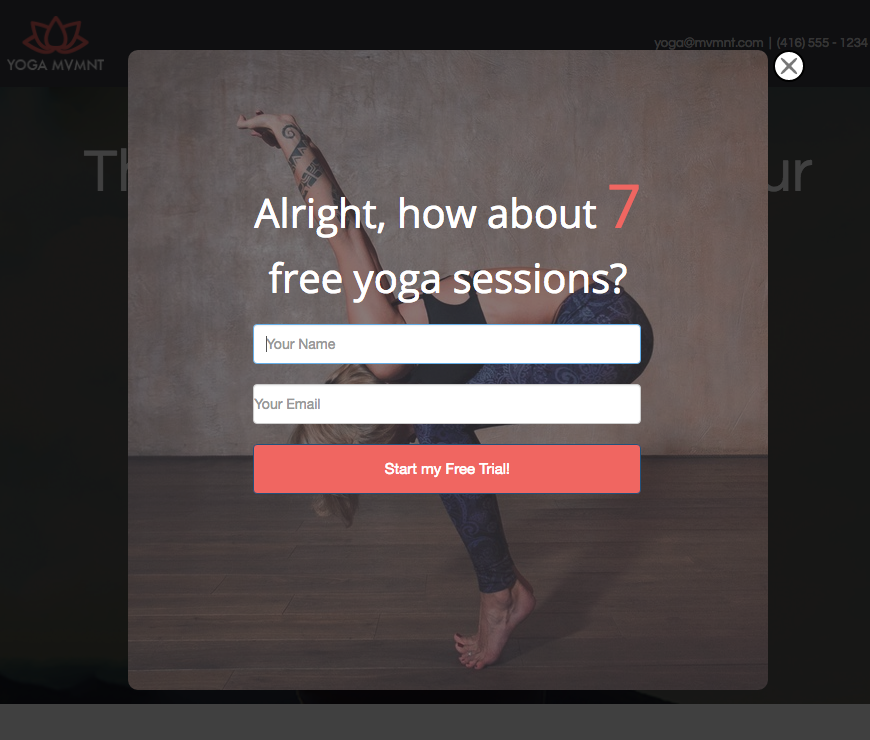Have you put a lot of time and energy into driving traffic to your website?
Would you like to ensure that every person who visits your site has the highest chance of becoming a paid customer?
You spend a bunch of money on social media marketing, Adwords, Facebook Ads and inbound marketing.
And while optimizing those traffic sources is essential, it’s equally essential for you to optimize the place they’re going – your website.
By implementing these five strategies you’ll take whatever traffic you’re driving and get more results from it. Simple as that.
Design for Conversion
First and foremost you need to design a website which is optimized for conversion.
Because “designing for conversion” is such a massive subject I won’t dive into it too deeply within this article. I have put my “related reading” recommendations below.
What I will do is give you my 5 essential element checklist for creating a well-optimized website:
- Use professionally-created layouts: Whether it’s a WordPress plugin, a freelance web designer or your own skills, no factor puts off your hard-earned traffic faster than a website which looks like it was created in 1998.
- Create ample opportunity for conversion: Don’t hide your pricing, signup or product conversion goals. Make CTAs prominent and frequent and conversion paths straightforward.
- Err on the side of minimalism: Until proven otherwise (see essential element #5) keep your website as simple as possible: less text, fewer pages, larger value-oriented headlines, etc.
- Use Psychology: We make a lot of decisions online based on our subconscious. Color, text, layout, messaging – it all adds up to a rashly bought magazine in the grocery aisle or a Ferrari we really didn’t need. Check out the Complete Guide to the Psychology of Conversion Optimization for more.
- Test: An A/B testing tool (Visual Website Optimizer, Optimizely, etc) costs about $75 a month (for 10,000 monthly visitors). You’ll make that money back in your first test. Check out 50 A/B Split Test Conversion Optimization Case Studies for inspiration.
For more on the psychology of conversion-optimized design, check out my Complete Guide to the Psychology of Conversion Optimization. For design principles specific to landing pages, check out The Data-Driven Guide to Landing Page Design.
Use Landing Pages to Focus Campaign Traffic
The most critical element of doing more with your website traffic is sending them somewhere that’s focused on conversion.
If you’re sending your ad traffic, blog traffic, outreach traffic and SEO traffic (everyone who sees your brand name and clicks on it, say) to your homepage, you’re likely missing out on hundreds of thousands of dollars.
You have a bunch of individual campaigns, right? Think about it this way…
- Your blog itself is a marketing campaign
- The several subjects you write on your blog are their own campaigns
- Your Facebook Page is its own campaign
- The promotions you’re running (discount, “enter to win,” coupon codes and sales) are campaigns
- Every ad you have running for each individual search term is its own campaign
- Every lead generating ebook, webinar or report you’ve created is its own campaign
So when someone clicks on a link for your site from one of those places, you need a page dedicated to eliciting a relevant conversion.
We call that a landing page.
For a Yoga Studio, running a free trial this summer, that landing page might look something like this:

Use Popup Overlays to Reduce Bounce Rates
Wishpond has been using popup overlays for more than a year now, and they’ve had an incredible influence on the conversion rates of our whole site. From blog to pricing and even the billing page, we’ve used popup overlays everywhere, and always seen an improvement.
Sure, they’re controversial. But have you noticed how many blogs and websites out there are using them?
It’s because they work.
For example, we recently added an exit overlay to our pricing page prompting people to reconsider leaving. Here’s a snapshot of the A/B test results:

That’s a 22% increase on our pricing page conversion rates. It translates to several thousand dollars a month in increased revenue.
Remember to always offer something relevant and valuable to your landing page traffic. For instance, if I was to put a popup overlay on the yoga studio landing page above, I might do something like this…

Javascript a Discount to Hot Leads
Now if the word Javascript intimidates you, you’re not alone. I’m a writer, thinker and dreamer – not a web developer.
So if I can do this, so can you. No matter your skill level.
Here’s what we’re gonna do: We’re going to trigger a javascript entry popup exclusively to people who have visited your product or pricing page twice in the past three days but not purchased or converted.
Why?
Because someone who visits your product or pricing page twice in three days but doesn’t convert is someone very interested in what you have to offer. They just need that extra push. And if we showed everyone an entry popup on your pricing or product page we’d just infuriate people.
So we’ll design a popup with messaging like…

Then, when we head to the “Next” Step…
Step 1: Select the Javascript popup type (this means your popup’s appearance will be triggered by Javascript):

Step 2: Copy the trigger function Javascript code:

Step #3: Create a marketing automation workflow with “hot lead” conditions:

We’ve found that the best way to define a hot lead is based on multiple visits to a pricing page. For B2C companies, however, you may find that anyone who visits the same product page multiple times may yield better results.
Step #4: Paste the trigger function Javascript code into the “Actions” section of the workflow. Define when and where you want the Javascript to be triggered, and hit “Done” and then “Publish.”

Boom. That’s it. This will trigger an entry popup to show exclusively to Hot Leads. That, my friends, is advanced website optimization with little to no fuss. You can do it. I believe in you. And you’ll thank me if you do.
Use Remarketing and Retargeting to Recapture Traffic that Does Bounce
Ultimately, of course, there’s only so much you can do within your website (even with Javascript). You’re going to lose a sizeable percentage of the people you drive there no matter what.
But, if you really want to succeed with online marketing, you’ll fight tooth and nail for every one of those people who visited you. You won’t go down without a fight.
Remarketing allows you to give it everything you’ve got.
Remarketing (either on Google’s ad display network or the Facebook platform) enables you to focus an ad campaign on people who have already viewed your site and left.
Essentially, you install a bit of code (called a remarketing pixel) in the backend of your site. When someone visits the page with that code in it, their browser is automatically stuck with another bit of code. If they leave your site without visiting a conversion page (like a “Thank you for Paying!” page) then the next time they travel to one of the sites within the Google Ad Display network, or Facebook, they’ll see one of your ads – tailored specifically for them.
For instance, here’s an example from a Wishpond remarketing campaign on the Facebook platform. We’re remarketing everyone who visits https://www.wishpond.com/social-promotions or a blog article with “facebook” in the URL:

We’re currently paying about a dollar for everyone we drive back to the website.
Except, of course, we have a campaign-specific landing page for all remarketed traffic. So we’re converting far more of them than we would be if we were just sending them back to our homepage.
For more about remarketing, check out What is Ad Retargeting (Remarketing) and How Does it Benefit My Business? For a more specific guide, try 3 Ways to Use Retargeting to Find Success Online.
Wrapping it Up
Hopefully these five strategies will mean you get more out of the dollars you spend driving traffic.
Remember to package everything in terms of a campaign: your landing pages, popups, remarketing ads and javascripted overlays should all correspond to the message your traffic clicked on initially. Only then will you be actually optimized.
Related Reading:
- How to Drive Traffic to your Website
- Complete Guide to the Psychology of Conversion Optimization
- The Data-Driven Guide to Landing Page Design
- 5 Ways to Use Popups on Your Website
- How We Doubled Blog Lead Generation with Click Popups
- What is Ad Retargeting (Remarketing) and How Does it Benefit My Business?


